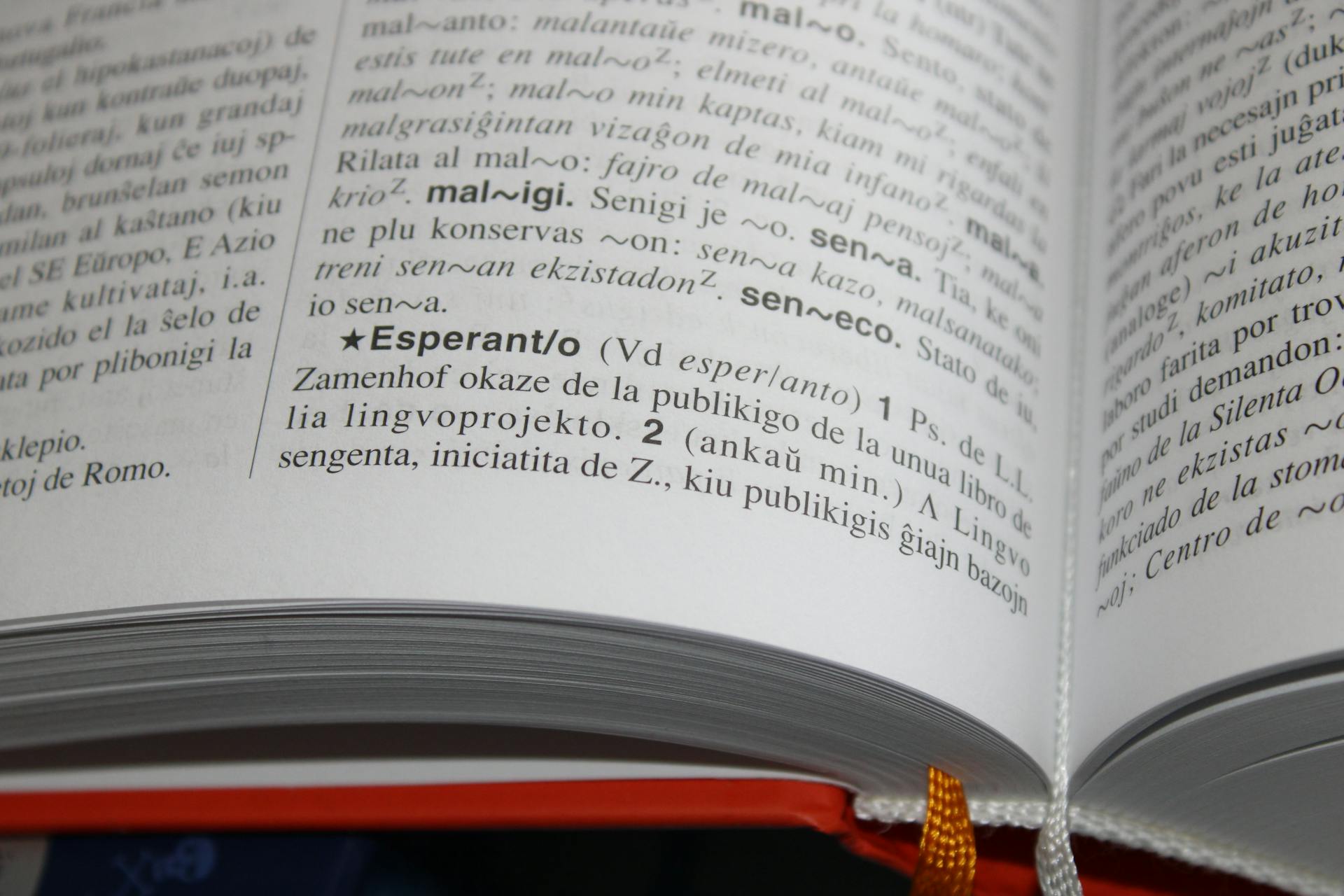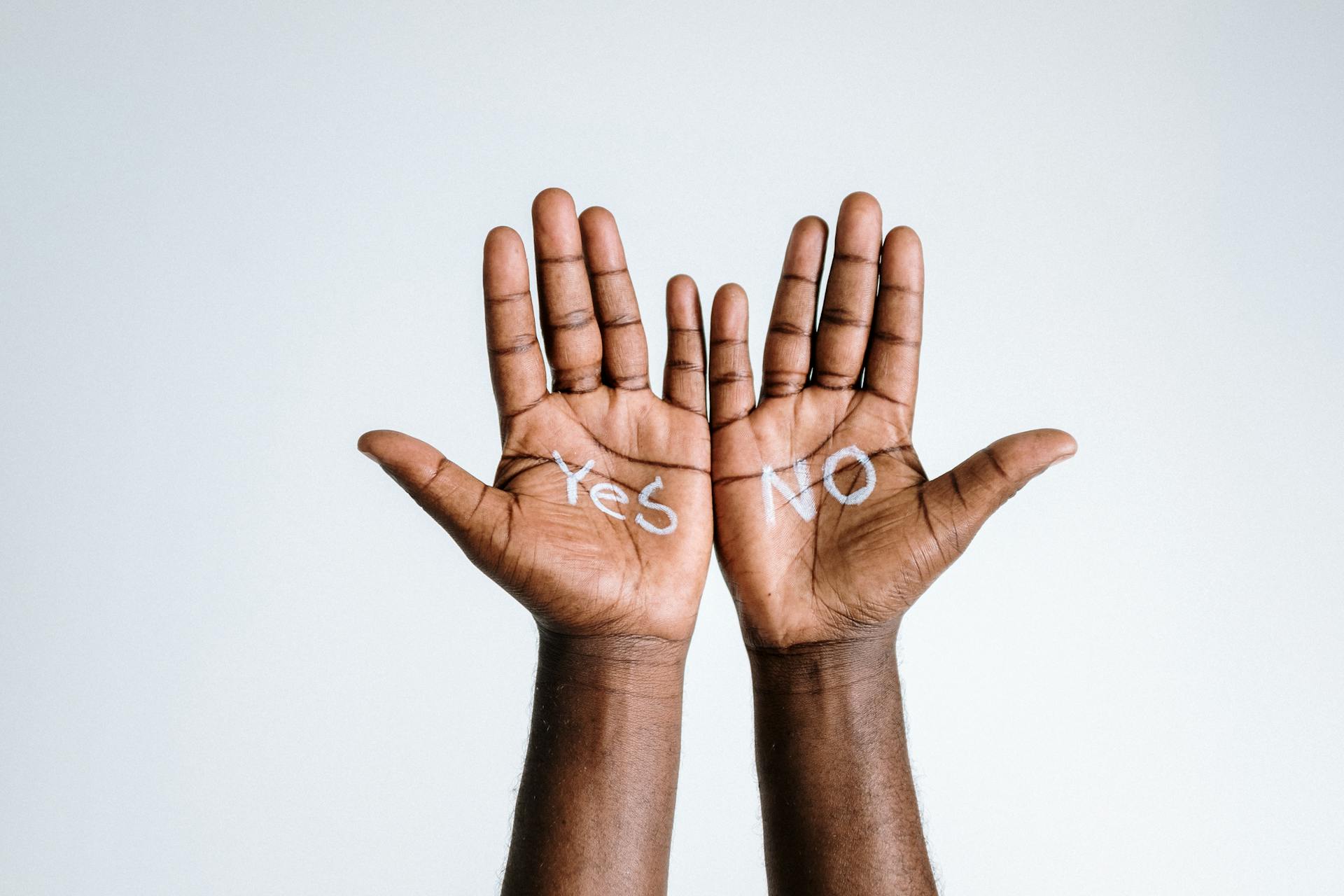
Loaning words is a practice that has been around for centuries, with evidence of it dating back to ancient Greece and Rome. Borrowing words from other languages has been a common occurrence in the English language.
The process of loaning words has been influenced by various factors, including trade, colonization, and cultural exchange. This has resulted in a diverse vocabulary that reflects the history and interactions of different cultures.
The influx of loaned words has not only enriched the English language but also provided a window into the cultural and historical context of the time. For example, the word "sushi" was loaned from Japanese into English, reflecting the growing interest in Japanese cuisine in the 20th century.
For another approach, see: What Words Have Tea in Them?
What Are Loanwords?
Loanwords are words taken from one language and integrated into another, often with no translation.
This process is common to all languages, and English is no exception, with thousands of loanwords in its vocabulary.
The integration of loanwords can result in changes to pronunciation and grammar to fit the new language.
For instance, a word's meaning and appearance remain the same, but its sound and grammatical usage may adapt to its new home.
History of Loanwords

The history of loanwords in English is a fascinating story that spans centuries. Between the 8th and 11th centuries, Vikings traveled to the British Isles and brought their language, Old Norse, with them.
Many of the loanwords from Old Norse are still around today, with words like "anger", "club", and "law" being just a few examples.
In 1066, the Norman Conquest brought a large number of French words into English, which had a huge influence on the language. This led to the creation of Middle English.
Over 10,000 new words were added to English from French during this time, despite French being the official language. English speakers were in the majority, and their language survived and integrated the French loanwords.
The Renaissance saw the integration of Latin and Greek loanwords into English, marking the beginning of Modern English. This was a significant shift in the language, with new words entering the English vocabulary.
The Industrial Revolution and British colonization in the 17th and 18th centuries added even more loanwords to English from all over the world.
Here's an interesting read: What Words Have Owl in the Middle?
Types of Loanwords

Language borrowing is a fascinating phenomenon that has shaped languages in countless ways. One of the most common types of language borrowings is lexical borrowing, where a language acquires loan words or loan blends.
Lexical borrowing is so common that linguists have identified it as one of the primary types of language influence. In fact, most languages have been subject to this kind of influence at some point.
The English language is no exception, with loan words coming from languages like French and Spanish. For example, words like "rendezvous" and "ballet" have made their way into the English language.
Loan blends are another type of lexical borrowing, where a language creates new loan words by combining imported stems with native affixes. An example of this is the word "artillery", which combines the imported stem "artillery" with the native affix "-y".
Calques are also a type of language borrowing, where a language borrows words and phrases from another language and rephrases them in its own way. Examples of calques include "look-see" and "no-go", which originated from French and Canton Pidgin English, respectively.
Recommended read: Depreciate Synonym
Examples of Loanwords

English speakers use loanwords all the time in daily communication. Let's look at some examples.
Café is a loanword from French, and it's used to refer to a small shop that sells coffee and snacks. Many English speakers visit cafes on their way to work.
Restaurant is another loanword from French, and it's used to refer to a place where people go to eat. You can find restaurants serving all sorts of cuisines in any city.
Sushi is a loanword from Japanese, and it refers to a type of food made from vinegared rice and raw fish. Sushi is a popular food choice for many English speakers.
Roulette is a loanword from French, and it refers to a popular casino game. You might have seen people playing roulette in movies or on TV.
The English language has borrowed words from hundreds of languages, and we can't cover them all in this article.
Language Borrowing Periods

Language borrowing has been a significant part of the English language's history, with various periods contributing to its unique vocabulary.
The Viking invasion of the British Isles between the 8th and 11th centuries brought Old Norse words like "anger", "club", and "law" into the English language.
As the Norman Conquest of 1066 introduced French words, English speakers were able to integrate an estimated almost 10,000 new words from French into their language.
During the Renaissance, Latin and Greek loanwords started to make their presence felt in English, marking the beginning of Modern English.
Major Periods of Borrowing History
During the Germanic period, English borrowed words from other old Germanic languages, such as Old High German and Old Saxon, due to similarities in forms. This period dates back to before the Angles and Saxons left the continent for England.
The Viking invasions between the 8th and 11th centuries brought Old Norse words into English, which then mixed with Old English. Many of these loanwords are still used today, including "anger", "club", and "law."

The Norman Conquest in 1066 introduced a large number of French words into English, influencing the language significantly. An estimated 10,000 new words from French were integrated into English during this period.
The Renaissance marked the beginning of Modern English, with Latin and Greek loanwords starting to integrate into the language. This period saw a huge influx of words from European high culture and the earliest period of colonial expansion.
Major colonial expansion, industrialization, and significant American immigration around 1650 led to a significant increase in loanwords from all over the world. This period also saw an increase in borrowing from Latin and Greek, particularly in specialized vocabulary domains like science and technology.
The Industrial Revolution and British colonization in the 17th and 18th centuries added more loanwords to English from various languages, including European languages like French and Louisiana French (Cajun).
Language Borrowing 3
Language Borrowing Type 2, also known as loan shifts, occurs when a word's meaning is extended or changed in the borrowing language due to its native language usage. This phenomenon is often seen in cases where the borrower is not willing to accept the donor's lexical material fully but is trying to adapt it to their language's peculiarities.

Loan shifts can be influenced by cultural, political, social, or other factors, and they can lead to the creation of new words with different meanings. For example, the Portuguese word "frio" meaning "cold infection" was borrowed into English as "frio" but with the meaning of "cold infection" not present in the original language.
The loan shift from the Norwegian language of the word "wervelwind" to English word "whirlwind" is another example of this phenomenon. This type of borrowing can be seen as a way for languages to adapt and evolve over time.
Here are some examples of loan shifts:
In conclusion, loan shifts are an important aspect of language borrowing, allowing languages to adapt and change over time. By examining these shifts, we can gain a deeper understanding of the cultural, political, and social factors that influence language use.
Frequently Asked Questions
Why does English use loan words?
English uses loan words due to cultural contact with other language communities, where words are borrowed to describe new concepts or ideas. This process enriches the English language with diverse vocabulary and reflects its global cultural influences.
Sources
- https://englishlive.ef.com/en/blog/language-lab/12-english-loan-words-languages/
- https://www.slideshare.net/slideshow/loan-words-in-english/72628961
- https://ivypanda.com/essays/language-borrowings-and-their-types/
- https://www.busuu.com/en/english/loan-words
- https://www.ruf.rice.edu/~kemmer/Words/loanwords.html
Featured Images: pexels.com


